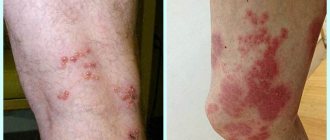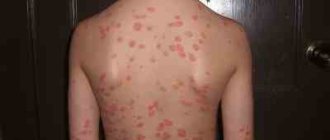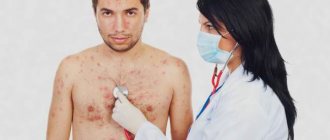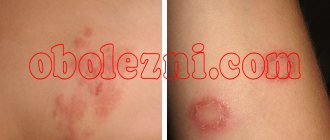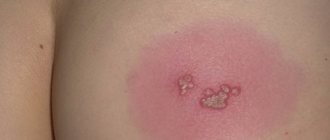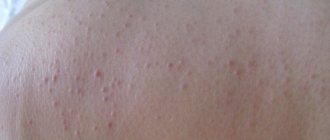Chickenpox is a fairly common infectious disease that is highly contagious. The disease most often affects children, although adults who did not have time to get sick in childhood are not protected from acute infection. The danger of the disease is that in the first stages of infection it can be easily confused with another disease that has similar symptoms. What are the first signs of chickenpox in children, photos of the initial stage, features of the course of the disease, how to react correctly? There are quite a few questions that interest parents who are faced with chickenpox for the first time, and they need to be sorted out in advance so as not to allow the disease to take them by surprise.
Basic terminology
Chickenpox is a type of herpes virus with a contagiousness and susceptibility rate in humans close to 100 percent. In official terminology, the disease is referred to as chickenpox. From the publication dedicated to photos of chickenpox, you will learn about the characteristic symptoms, treatment and other features of the disease in adults that you should know about.
How long does chickenpox last in teenagers?
The duration of the disease depends on many factors, for example, health, virus activity, and the presence of chronic diseases. It is impossible to say specifically how long the illness lasts. You can only select periods:
- Incubation – when there are no symptoms yet. Its duration ranges from 7 to 21 days.
- The prodromal period is short, accompanied by malaise, lasting 1-2 days.
- Rash – lasts 2-9 days.
- Recovery - begins from the moment the last new bubbles appear. After five days, the child is considered non-infectious.
So, the illness can last from 7-8 days to several weeks, depending on the severity of the disease.
Nature of the rash
A number of other viral and dermatological diseases exhibit similar symptoms. The photo of chickenpox in adults is different in that it reflects the stages of formation of the rash. At first, the rash consists of bright elements, which are gradually replaced by watery blisters. The blisters burst, itch, and can leave scars.
Possible complications
Ignoring the symptoms of the disease, self-medication and non-compliance with doctor’s recommendations lead to dangerous consequences for the body. Chickenpox in adolescents can provoke the development of the following complications:
- formation of rough scars on the body (more details here);
- inflammation of the membranes and substance of the brain (more details here);
- myocardial inflammation;
- inflammation of the cornea of the eyes;
- decreased vision;
- stomatitis;
- inflammation of the liver and joints;
- secondary viral pneumonia;
- kidney damage;
- abscess formation;
- sepsis;
- phlegmon;
- streptoderma.
The risk of complications in adolescents is low. More often than not, chickenpox ends in complete recovery.
Chickenpox treatment
If children with chickenpox, photographs of which you can see on a separate page, do not need direct treatment, then the manifestations of chickenpox symptoms in adults in the photo make treatment extremely necessary. Medicines of the antiherpetic group can be prescribed to the patient already during the incubation period.
Etiology, and who is the causative agent of chickenpox
Chickenpox is an acute infectious disease caused by a herpes virus. The spread of infection occurs through airborne droplets, and just a few minutes spent in the same room with a carrier of the virus is enough to catch the disease. Infection can occur even at a considerable distance - up to 50 m.
A child becomes contagious after the incubation period, which lasts an average of two weeks. It often happens that the virus does not manifest itself in any way during the entire time and can hide in the body even for up to three weeks. Only after this do signs of the disease become apparent.
Infection can occur several days before the appearance of a profuse rash, which is the hallmark symptom of the disease. A child is especially dangerous to others during the acute period of infection - about five days.
What does acne look like with chickenpox?
Chickenpox must be treated early in its development. As a rule, it is easy to understand that we are talking about chickenpox, since acne appears immediately after the incubation period. You will find photos of what kind of acne forms with chickenpox in this article. They may appear between 5 days and 3 weeks after contact with an infected person. The duration of the incubation period depends solely on the quality of functioning of the immune system.
The first manifestation of chickenpox may be cold symptoms. A person will notice increased fatigue, headache and increased body temperature throughout the day. After this, the first acne will appear on the body. It is the characteristic rash that is the main symptom of chickenpox. In this case, it is simply impossible to confuse one disease with another.
The first pimples on the body may appear immediately, but it often happens that the rash becomes noticeable only 3-4 days after the general signs of infection. Initially, the chickenpox rash appears as small spots, the size of which does not exceed 2 mm. Gradually, they spread more and more throughout the body, and pimples form in place of the old spots. After a certain period of time, they fill with liquid and turn into blisters. A photo of what acne looks like with chickenpox can be seen just below. In difficult situations they will fill with pus. After a while, the blisters burst and the area becomes crusty. You should not touch it under any circumstances, as this is fraught with complications in the form of scars and cicatrices.
There is no specific place where the first rash usually appears. But statistics show that the areas most often affected are the scalp, abdomen and extremities. Occasionally, the first pimples may form in the oral cavity, which is observed mainly in adult patients.
The appearance of pimples with chickenpox, photos of which can be seen in this article, indicates that the disease has entered its acute stage. It should be noted that the blisters that appear on the body of adult patients are much larger than the rash in children. But how quickly acne appears with chickenpox, the process of their maturation and healing always occurs the same way. That is, initially these will be red spots, then in their place a pimple filled with liquid will appear, which in a few hours will burst and become covered with a crust. Acne can take more than a week to heal. On average, the crust lasts 8 days. It should be noted that at the same time, both new pimples and already drying out crusts may be present on the patient’s body. This occurs due to the fact that chickenpox always occurs in waves.
Acne at the stage of crusts and blisters is always very itchy. This creates many problems, especially when it comes to children. But adults can also tear off the scabs due to the fact that they are very itchy. Basically, this happens in a dream. The rash on the skin does not cause pain. This even applies to the stage of acne when they burst. But a rash in the mouth often leads to severe discomfort. Unpleasant sensations most often occur when eating food, especially rough food. A photo of what pimples in the mouth look like with chickenpox can be found in this article.
Patients at any age should avoid scratching acne. Even if the blister is accidentally touched, not a crust, but an ulcer will form in its place. Only after a while will it crust over and begin to heal. Scars always appear in such places, which can remain for life or will be removed, but only with the help of complex and expensive procedures.
How long do acne last?
After the first spot appears on the body, it will take 2-3 days before a pimple filled with liquid or pus forms here, when we are talking about a special form of chickenpox. This formation on the skin matures for some time, after which the blister bursts. Then it becomes covered with a crust, which can last for about a week. Thus, we can say that the “life” of one pimple is approximately 10 days. But this does not always happen, because everything depends on the characteristics of the body and the effectiveness of the immune system.
If everything is in order with the body, and the disease is mild, then the symptoms of chickenpox may completely disappear within a week. It is more difficult for those patients who have severe chickenpox. Here you can expect a large amount of rash, which will appear for at least 3 weeks. You will see photos of which pimples with chickenpox appear in one form or another in this article.
But after all the symptoms disappear, the person will remain immune to the disease for life. An exception that can affect re-infection is a very weakened state of the body.
Sometimes pimples due to chickenpox, photos of which can be seen in this article, do not go away for a very long time. This indicates that the patient has developed a complication in the form of herpes zoster. In such a situation, there will be a large concentration of acne in the lumbar region. It should be noted that there are also forms of herpes zoster in which there is no rash at all. But in such a situation, the disease will manifest itself in the form of severe pain in the area of the lumbar nerve.
If the patient has a severe form of the disease, he needs to treat acne especially carefully. Otherwise, he is guaranteed a complication such as scars. They usually appear at the site where the blisters have ceased to become ulcers. Chickenpox scars are generally round in shape. They are not large, but there can be a lot of them. Scars look especially ugly on the face. It is difficult to get rid of them, since the scars remain quite deep. To do this, you can use special creams or use special cosmetic procedures.
Examination of patients with acne
If chickenpox is suspected, patients should be examined. Most often, doctors make a diagnosis based on the results of laboratory tests and external examination. It is very important to isolate the virus. It is necessary to exclude other diseases that manifest as a rash. These include measles, scarlet fever, meningococcal disease and acne.
Patient examination
If there are acne due to chickenpox, then the following studies are carried out:
- general clinical blood tests;
- biochemical analysis;
- polymerase chain reaction;
- taking smears from the affected skin followed by virological testing;
- linked immunosorbent assay.
An express method for diagnosing the disease is the immunofluorescence reaction. For acne in the mouth, consultation with an otolaryngologist is required. It is necessary to exclude herpes and candidiasis. There are direct and indirect methods for detecting herpes virus type 3 in the body. In the first case, DNA sections of the pathogen are identified. This will require a polymerase chain reaction.
If there is a rash in the mouth and on the skin, then serodiagnosis is required. Specific antibodies (immunoglobulins M and G) are detected in the blood. A general blood test shows a normal ESR, a decrease in the number of leukocytes and an increase in the level of lymphocytes. Circulating immune complexes are found in the blood.
